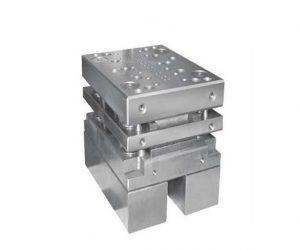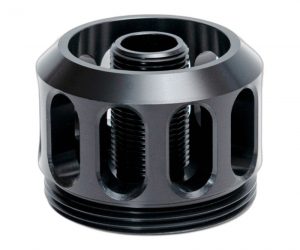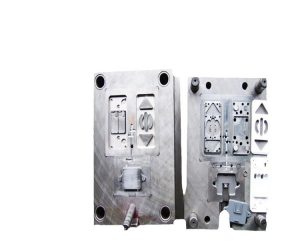There are several key factors behind the doubling demand for plastic molds. Firstly, technological advancements have made plastics more versatile, durable, and cost-effective, leading to a significant increase in plastic usage in industries such as automotive, electronics, consumer goods, packaging, and healthcare.
Secondly, the advancement of injection molding technology has made production more precise, efficient, and capable of producing complex parts. This makes plastic injection molding more attractive to manufacturers.
Furthermore, nowadays everyone likes customized and personalized products, and plastic molds are the key to achieving these unique designs and functions.
Automation and Industry 4.0 have also made production processes smoother, shortened production time, and improved efficiency, which requires more molds to keep up with production speed.
Environmental protection is also a major consideration. As people pay more and more attention to sustainability, the demand for recyclable and environmentally friendly plastics is increasing, which requires molds that can produce these materials.
Also, technology allows us to manufacture smaller and lighter components, especially in the electronics and automotive industries, which requires finer molds.
The progress of rapid prototyping and 3D printing technology has made mold design and validation faster and more cost-effective, encouraging more companies to adopt plastic injection molding.
The growth of e-commerce and global trade has also driven up the demand for plastic products, especially in consumer goods and packaging, which requires greater production capacity and naturally more molds.
In the medical field, with the development of new technologies and equipment, the demand for precision plastic parts and medical equipment is also increasing, which requires more advanced molds.
Finally, the rapid development and urbanization process of emerging economies have also increased the demand for plastic products in fields such as construction and transportation.
Overall, technological advancements have played a driving role in these areas, and with continuous innovation in various industries, the demand for plastic molds is expected to remain strong and continue to grow.
Plastic molds are known as the mother of industry. Nowadays, the launch of new products is inseparable from the application of plastics. With the continuous improvement of China's manufacturing industry's international status, the plastic mold industry has also achieved rapid development. The demand for plastic molds has doubled, and its production cycle is also constantly shortening.
In modern industrial production, plastic molds play a vital role. Whether it is automobile manufacturing, electronic products, household appliances or medical equipment, plastic molds of various shapes and sizes are needed to manufacture the required parts. With the advancement of science and technology and the promotion of innovation, the design and manufacturing technology of plastic molds are also constantly improving, which greatly improves the quality and precision of products.
The improvement of China's manufacturing industry's international status has brought huge opportunities to the plastic mold industry. More and more domestic and foreign companies choose to invest and build factories in China, which further promotes the development of the plastic mold industry. At the same time, the technical level and production capacity of China's manufacturing industry have also been recognized globally, making China's plastic mold products competitive in the international market.
With the increase in market demand, the production cycle of plastic molds has gradually shortened. By introducing advanced production equipment and technology, as well as optimizing production processes and management methods, China's plastic mold companies are able to complete product design and manufacturing more efficiently. This not only improves production efficiency, but also meets customer needs and provides more timely and accurate delivery.
However, the plastic mold industry also faces some challenges. First, with the intensification of market competition, enterprises need to continuously improve their technical level and innovation ability to maintain their competitive advantage. Secondly, the improvement of environmental awareness has also put forward higher requirements for the plastic mold industry. Enterprises need to actively adopt environmentally friendly materials and processes to reduce the impact on the environment. In addition, talent training and technological innovation are also key factors in the development of the plastic mold industry. Enterprises need to increase their efforts in talent training and introduction, and continuously promote technological innovation and industrial upgrading.
In short, as the mother of industry, the plastic mold industry has ushered in opportunities for rapid development against the background of the improvement of the international status of China's manufacturing industry. By continuously improving the technical level, optimizing the production process and strengthening environmental awareness, China's plastic mold industry will be able to better meet market demand and achieve sustainable development.
Therefore, it is imperative for plastic molds to accelerate the pace of technological progress and innovation. Only by mastering the latest plastic mold technology can we improve our competitiveness and open up new market areas.
In recent years, the pace of structural adjustment in the plastic mold industry has accelerated, mainly because the development speed of large, precise, complex, long-life molds and mold standard parts is higher than the overall development speed of the industry; the proportion of plastic molds and die-casting molds has increased; the number and capacity of market-oriented professional mold manufacturers has increased rapidly. With the deepening of economic system reform, "three-investment" enterprises and private enterprises have developed rapidly.
Faced with the challenges of foreign advanced technology and mold quality, low market prices and short manufacturing cycles, the plastic mold industry should continuously improve the design, manufacturing, process technology and management level. China must break the traditional plastic mold production process, standardize plastic mold design, componentize plastic mold production, and make plastic mold enterprise management information and networking. Only in this way can the overall level of the plastic mold industry leap to a new level, shorten the gap with foreign levels, and enable China's plastic mold industry to have greater development. Plastic molds are widely used in the manufacturing industry to produce various plastic products. With the rapid advancement of technology, the demand for plastic molds has doubled in recent years.
Impact of Technical Progress on the Demand for Plastic Molds
The manufacturing industry has undergone significant changes over the years. One of the major changes is the adoption of new technologies to improve production efficiency and reduce costs. The use of computer-aided design (CAD) and computer-aided manufacturing (CAM) has made it easier for manufacturers to create high-quality plastic products. However, these technologies require specialized molds that can withstand the high temperatures and pressures involved in the plastic molding process.
Advancements in materials science have also contributed to the increased demand for plastic molds. The development of new plastic materials with unique properties and characteristics has made it possible to create more complex and intricate plastic products. However, these new materials require specialized molds that can handle the specific requirements of each material.
The Role of Plastic Molds in the Manufacturing Industry
Plastic molds play a critical role in the manufacturing industry. They are used to produce a wide range of plastic products, from small components to large parts used in the automotive and aerospace industries. Plastic molds are designed to meet specific requirements, such as shape, size, and surface finish. They are also designed to withstand high temperatures and pressures, ensuring that the final product is of high quality and meets the required specifications.
Plastic molds are also used to create prototypes of new products. This allows manufacturers to test their designs and make any necessary adjustments before moving to mass production. The use of plastic molds in prototyping also helps to reduce costs and shorten the development cycle, allowing manufacturers to bring their products to market faster.
The Importance of High-Quality Plastic Molds in Manufacturing
Plastic molds are an essential component in the manufacturing industry. High-quality plastic molds ensure that the final product meets the required specifications and is of consistent quality. Poor-quality molds can result in defects, such as warping and cracking, that can compromise the integrity of the final product.
To ensure high-quality plastic molds, manufacturers must use advanced materials and manufacturing processes. This includes the use of high-performance alloys and coatings to improve the durability and longevity of the mold. Manufacturers must also adhere to strict quality control standards to ensure that the molds meet the required specifications.
The Role of CAD and CAM in the Design and Manufacturing of Plastic Molds
CAD and CAM have totally changed how we design and make plastic molds. With these tools, designers can create detailed 3D models of the mold. Then, they use CNC machining to turn those designs into real molds. Plus, CAD and CAM help manufacturers tweak the mold design for better efficiency and lower costs.
Using CAD and CAM also speeds up the whole process of making a plastic mold. This lets manufacturers quickly make new molds or adjust current ones as needed.




